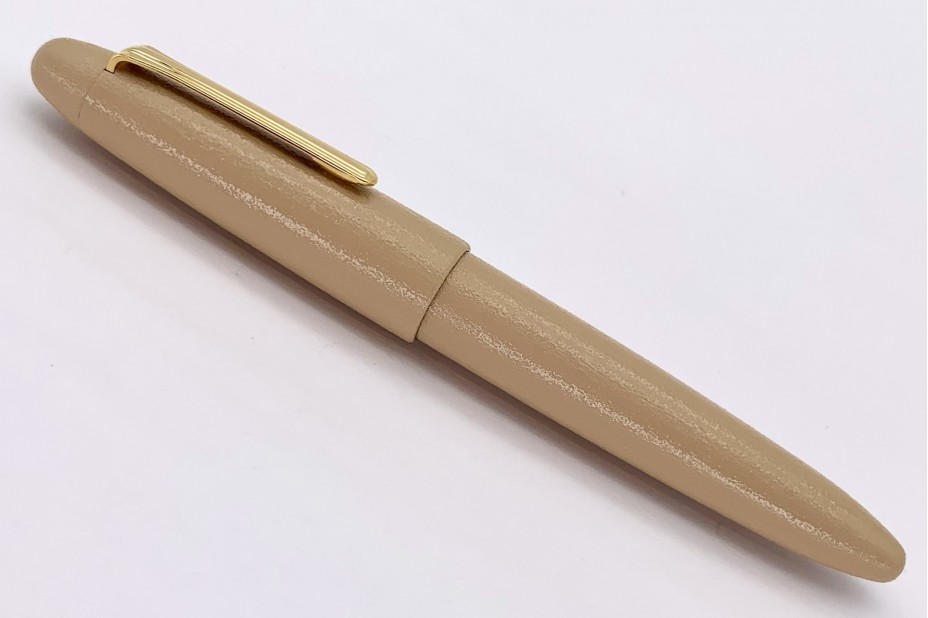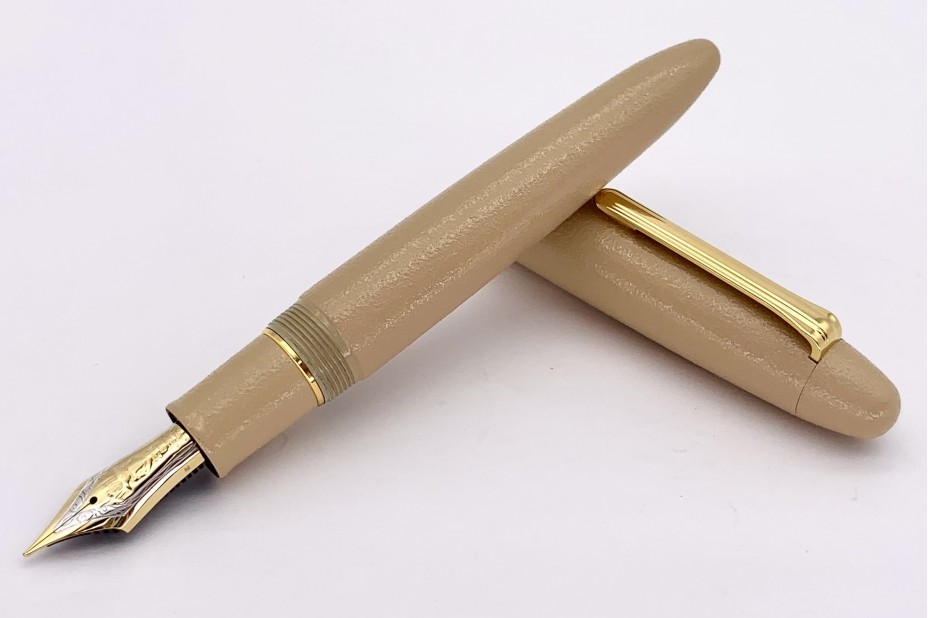KING OF PENS
Sailor Bespoke King of Pen Ebonite Iro-Miyabi Usuko Fountain Pen
SA.10.1584.417
Sailor
Sailor Bespoke King of Pen Ebonite Iro-Miyabi Usuko Fountain Pen
The Sailor Bespoke King of Pen Ebonite Iro-Miyabi Usuko Fountain Pen is adorned with a supersized 21k gold nib with gold-plated trim and used proprietary ink cartridges or a converter for bottled ink. The Fukaai model gets its name from the favoured color of blue by Samurai and considered a "lucky colour".
Packaged in a beautiful paulownia box that is extremely suited for the storage of lacquer products. It is complemented by the addition of a Sanada-strap which is commonly used in the Japanese tea ceremony. Included a cleaning cloth, two black ink cartridges and a converter (installed in the body), and an instructional manual.
Iro-miyabi Series
Available in a Suo (Red), Chítosemidori (Green), Fukaai (Blue) and Usuko (Ivory), each pen is made of ebonite using a traditional Ishime-nuri lacquer technique which enables its surface to be roughened to represent the appearance of stones. The traditional lacquer art Iro-miyabi is a series of writing tools that expresses the traditional Japanese irò (meaning color) along with the elegant and beautiful miyabi (meaning grace) with colored lacquer. It is said that the value of lacquered furnishings (lacquerware) was established in the Nara (710-794) and Heian (794-1192) periods as a symbol of the aristocratic society's wealth and as a beautiful embodiment of the world of the Gods And Buddha. The colour Of the lacquerware was developed In tandem with this value. After several months for the lacquer to dry, it is repeatedly coated with other different kinds of lacquer to create a masterpiece made with much care. Fitted with a 21k nib which is more flexible than a 14k or 18k nib and designed to elevate the user's writing experience and provide a stable ink supply.
Usuko (Ivory)
The name comes from The Japanese word koboku Which means fragrant Wood because the pen is dyed With fragrant wood for an elegant colour Which was adored In The Heian Period (794-1192)
Packaged in a beautiful paulownia box that is extremely suited for the storage of lacquer products. It is complemented by the addition of a Sanada-strap which is commonly used in the Japanese tea ceremony. Included a cleaning cloth, two black ink cartridges and a converter (installed in the body), and an instructional manual.
Iro-miyabi Series
Available in a Suo (Red), Chítosemidori (Green), Fukaai (Blue) and Usuko (Ivory), each pen is made of ebonite using a traditional Ishime-nuri lacquer technique which enables its surface to be roughened to represent the appearance of stones. The traditional lacquer art Iro-miyabi is a series of writing tools that expresses the traditional Japanese irò (meaning color) along with the elegant and beautiful miyabi (meaning grace) with colored lacquer. It is said that the value of lacquered furnishings (lacquerware) was established in the Nara (710-794) and Heian (794-1192) periods as a symbol of the aristocratic society's wealth and as a beautiful embodiment of the world of the Gods And Buddha. The colour Of the lacquerware was developed In tandem with this value. After several months for the lacquer to dry, it is repeatedly coated with other different kinds of lacquer to create a masterpiece made with much care. Fitted with a 21k nib which is more flexible than a 14k or 18k nib and designed to elevate the user's writing experience and provide a stable ink supply.
Usuko (Ivory)
The name comes from The Japanese word koboku Which means fragrant Wood because the pen is dyed With fragrant wood for an elegant colour Which was adored In The Heian Period (794-1192)









